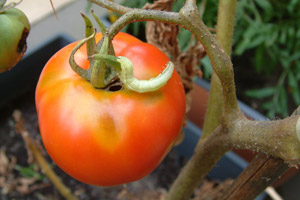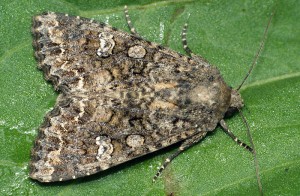Cotton bollworm caterpillars have been hunting in dacha garden beds for several years. The damage caused by cutworms is especially noticeable in areas adjacent to abandoned lands and uncultivated dachas. It is on lands overgrown with weeds that the caterpillars of the first generation of the pest feed.
By the beginning of June, when tomato and pepper bushes grow in summer cottages, cotton bollworms begin to lay eggs on the lush greenery of cultivated plants.True, it is difficult to notice traces of the pest’s activity: butterflies lay a lot of eggs, but not in groups, but one or two at a time. And since the eggs are small (half a millimeter greenish ball, cut off from the bottom), you need to inspect the bushes very carefully to find them.
Experienced summer residents determine the beginning of summer by the inconspicuous brownish butterflies that appear in the dark (they often hit street light bulbs). Within a few days after emergence, the butterflies begin laying eggs. And this can continue until the next generation of butterflies flies out.
Caterpillars hatch from eggs on the 3-10th day: the higher the temperature, the faster this happens. And they immediately begin to feed: leaves, flowers, buds, fruits. And not only tomatoes, but also pepper, corn, beans, peas. The cotton bollworm even got to the grapes.
After two to three weeks, the caterpillars, having fed, go into the soil and pupate at a depth of 4-8 cm. Perhaps in the fall or early spring, when digging the soil, you paid attention to brownish pupae about two cm long. Cotton bollworm butterflies appear from them in the spring. Knowing this, you can destroy part of the wintering stage of the pest by digging up beds of tomatoes and peppers late in the fall.
How to deal with cotton bollworm
In the spring, it is advisable to destroy the weeds on which the first generation caterpillars feed. Butterflies love to lay eggs on weeds of the nightshade family (henbane, black nightshade). If there are none, then ashiritsa will suit them.
Regular loosening of the row spacing of tomatoes and peppers helps reduce the number of pests.
Throw fruits damaged by the cotton bollworm at least into a bucket of water: if the caterpillar is still there, it will die.
Starting from the flowering and fruit setting phase, tomato beds are regularly treated with insecticides (confidor, decis-pro, coragen, etc.). About a month before the first fruits ripen, they switch to biological insecticides (lepidocide).
Insecticides are effective against younger caterpillars, so 2-3 treatments are carried out at weekly intervals to significantly reduce the number of the pest.



 CUCUMBERS NEVER GET SICK, I'VE BEEN USING ONLY THIS FOR 40 YEARS! I SHARE A SECRET WITH YOU, CUCUMBERS ARE LIKE THE PICTURE!
CUCUMBERS NEVER GET SICK, I'VE BEEN USING ONLY THIS FOR 40 YEARS! I SHARE A SECRET WITH YOU, CUCUMBERS ARE LIKE THE PICTURE! You can dig a bucket of potatoes from each bush. Do you think these are fairy tales? Watch the video
You can dig a bucket of potatoes from each bush. Do you think these are fairy tales? Watch the video
 How our fellow gardeners work in Korea. There is a lot to learn and just fun to watch.
How our fellow gardeners work in Korea. There is a lot to learn and just fun to watch. Eye trainer. The author claims that with daily viewing, vision is restored. They don't charge money for views.
Eye trainer. The author claims that with daily viewing, vision is restored. They don't charge money for views. A 3-ingredient cake recipe in 30 minutes is better than Napoleon. Simple and very tasty.
A 3-ingredient cake recipe in 30 minutes is better than Napoleon. Simple and very tasty. Therapeutic exercises for cervical osteochondrosis. A complete set of exercises.
Therapeutic exercises for cervical osteochondrosis. A complete set of exercises. Which indoor plants match your zodiac sign?
Which indoor plants match your zodiac sign? What about them? Excursion to German dachas.
What about them? Excursion to German dachas.